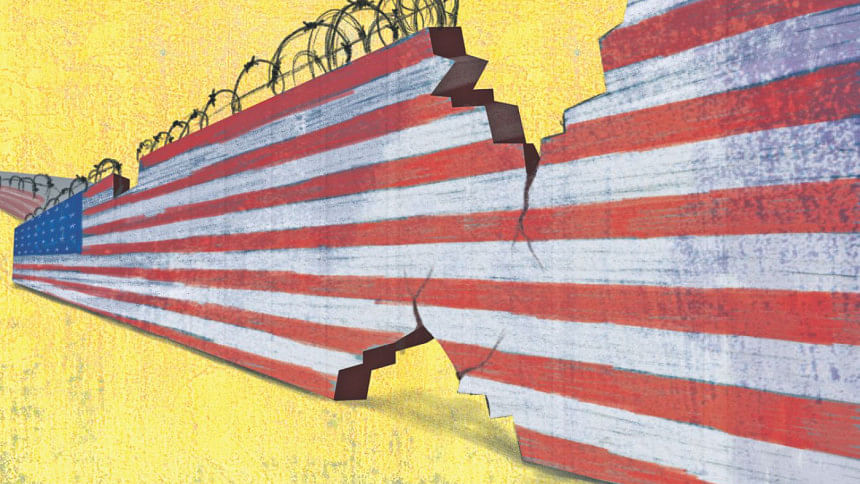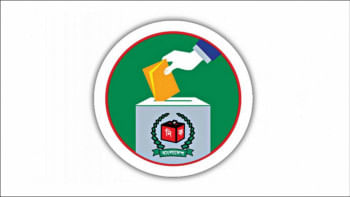Going up the Americas

That Bangladeshis migrate to far-flung parts of the world is nothing new—undertaking long, dangerous, and expensive journeys to reach countries in Europe, East Asia, Africa, and even the Americas. While many Bangladeshis migrate to the US legally, there are also those who undertake the difficult trek up South and Central America to enter the US through its southern border. These Bangladeshis routinely show up as numbers in border control and migration statistics of arrests, asylum claims, and deaths while crossing over into the US.
Bodies of these migrants have washed up on the shores of the Rio Grande river, which lies near the US-Mexico border. "There are many more bodies which are traceless in Mexico or the numerous other countries on the migrant trail which go unreported," says Sohel Mahmud, a member of New York-based community organisation DRUM. Short for Desis Rising Up and Moving, DRUM NYC is a non-profit which organises immigrant workers and youth of South Asian descent.
Once at the border, most migrants know to surrender and claim asylum, he says. While migrants are entitled to seek asylum in the US, processing of claims are backlogged and can take months. Those who illegally enter, thus, are likely to be picked up and their cases heard more quickly. In the meantime, they can make their way to relatives and friends in the country and disappear into the vast number of undocumented immigrants in the US.
"It's everyday news here, that many people [from Bangladesh and other countries] are coming here through Mexico," says Mahmud. A majority of DRUM's own members are undocumented and crossed into the US after trekking across South and Central America. DRUM has been asked to use their social networks to assist in identifying the bodies found at the US-Mexico border when local authorities fail.
Two such Bangladeshis were 18-year-old Shahadat Hossain Naim and 21-year-old Moinul Hassan Hridoy whose bodies were found in mid-May last year. In their pockets, medical examiners found a passport photo and a scrap of paper showing that at least one of them had crossed the Guatemala-Mexico border and other scraps with phone numbers and Bangla words on them. After surmising that the dead were Bangladeshi, DRUM was alerted.
They were eventually identified after DRUM reached out through social media, local ethnic media, and Bangladeshi media. Both the men were from Noakhali (but travelled separately till Mexico) but while a cousin of Naim identified him in a few hours, Hridoy was harder to identify, says Mahmud who helped reach out to the family members. Hridoy was eventually identified using DNA evidence.
***
Migrants, and not just Mexicans, trying to enter the US by the land border gained widespread attention late October year after a "caravan" of thousands of migrants from Central America tried to cross into the US from Mexico.
But in the crowd of mainly Hondurans were also Bangladeshis, as reported by several English and Spanish-language US media outlets. The first of the migrants travelling with the caravan, which at one point was made up of around 7,000 people, eventually reached the US border in November.
What this showed is that migrants entering the US through its southern border was not exclusively comprised of Mexicans and other Central Americans.
Senior national security fellow at the US-based think tank Centre for Immigration Studies, Todd Bensman, interviewed a Bangladeshi migrant in Costa Rican in mid-December last year. In the short video in an immigration processing centre, 29-year-old Omar Farouk said he was from Feni and left to "save my life and stay freely".
Farouk travelled from Dubai to Brazil, then on to Colombia and Panama before Costa Rica, en route to the US border. In the account of his route so far, Farouk said that the Panama mountains and jungles were "very difficult and risky". When Bensman pressed Farouk on whether Islamists, namely the Islamic State and Al-Qaeda, were problems in Bangladesh, Farouk insisted that the main problems were "political".
Bensman has extensively written on the terror threat posed by the Central American route migrants were taking to reach the US. He wrote that while migrants like Farouk could simply be economic migrants, they need to be vetted properly to ensure that do not pose an Islamist "threat" to US border and homeland security, a process made difficult by the fact that more and more Bangladeshi migrants were following the same route.
Many Bangladeshis have been detained in the US or stuck across the border in Mexico or other countries in Central America. As of September 21, 2018, 650 Bangladeshis were arrested in the border town of Laredo that year. This was up from 182 arrests in 2017 and only one in 2016. US Customs and Border Protection had announced in 2018 that Laredo was, for two years in a row now, the main crossing point for Bangladeshis illegally crossing the over 3,000-kilometres border between Mexico and the US.
The town is separated from Mexico by only the Rio Grande river. During a three-week period in September, more than 100 Bangladeshis were arrested and border officials said that most were men between the ages of 18 and 35 and who paid up to USD 27,000 for the entire smuggling trip. Bangladeshis are being portrayed in local media as coming from a country with Islamist terrorist networks and which is a drug hotbed.
Migration networks, as seen in the case of Europe and East Asia, are often built on the routes taken by others and the road to the US was taken up by Bangladeshis (and those of other nationalities) based on the travel routes of smuggling networks operating in Latin America for decades now. South Asian migrants are reported to take a plane to South America (especially to countries such as Ecuador with lax visa restrictions) and make their way up through Colombia and Panama to Guatemala and Mexico in Central America and then across to the US, their final destination. While Naim crossed through Ecuador's jungles with a trafficker, Hridoy flew to South Africa and then to Mexico directly with the help of two different traffickers.
A four-day Interpol operation on migrant smuggling networks across 11 countries in the Americas last year led to 49 arrests and recovery of USD two million. It also found that South Asian migrants, primarily from Bangladesh, India and Nepal, paid between USD 15,000 to 30,000 to get to the US, as reported by the BBC.


 For all latest news, follow The Daily Star's Google News channel.
For all latest news, follow The Daily Star's Google News channel. 



Comments